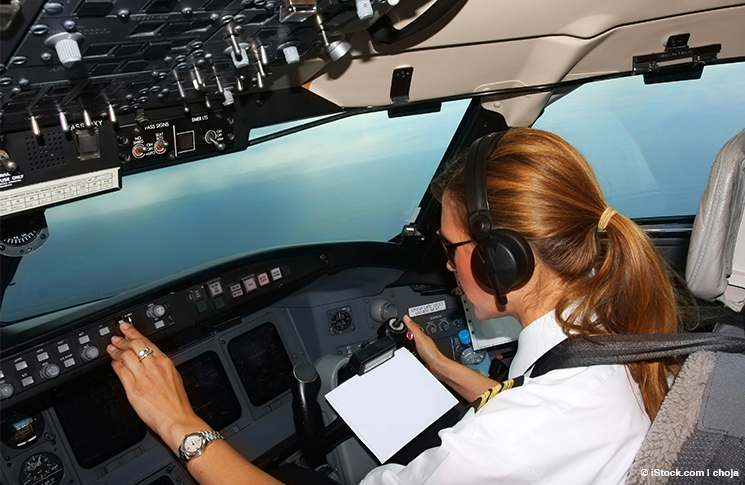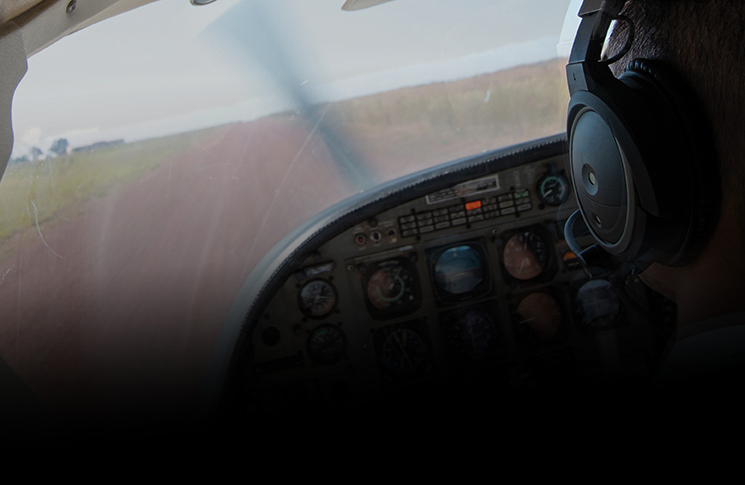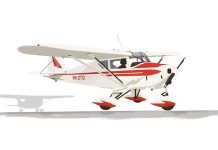In my first year as a student, I had an encounter with an instructor with a difference. Old school, ex-air force and a collector of vintage whizz wheels, this gentleman, whom I nicknamed Major Moustache, taught me the importance of a thorough pre-flight.
He used an unusual approach—ahead of my inspection, he would have been out at the aircraft, making a subtle change to test me. He’d say, ‘I’ve done the pre-flight, but I want you to check over it, and make sure I haven’t missed anything’ and send me out to the aircraft alone to see if I’d notice he had left the pitot cover on, the tie downs intact or the oil cowling improperly secured. He would list the error in a small note book which he kept in the top pocket of his immaculately ironed uniform and, when I noticed the oversight, would whip out the notebook and shout, ‘aha!’ striking through the offending item with his ever-ready pen.
As a student and natural people-pleaser, I took pride in always finding the intentional oversight and would enjoy the game of working out the missing item. But, more than just making my lessons fun, Major Moustache taught me the importance of a really good pre-flight. As well as ensuring my inspection was thorough, his method ensured I wasn’t simply following a checklist like an automaton—he made me think about each item and the importance of checking it.
He also taught me a valuable ritual which I still observe—place everything in the cockpit first, before the walk around. Get yourself set up and then, after the pre-flight inspection is complete, take 10 steps back from the aircraft and look at it from afar. This allows a big picture view, as well as the close-up view that is the ordinary pre-flight inspection.
If you’ve left the fuel card on the wing, the fuel drain on the floor or (as I did once) the tail tied down, this is when you will notice it. I’ve had more than one person confess they’ve tried to taxi over their chocks, which always prompts a mental image of the Major saying ‘the bird’s eye view, my dear!’
Many years later, when part of my job was to read the ATSB accident reports and write about what we learnt from incidents, I came across an international report regarding a Cirrus. The aircraft was owned by a management company which took care of the refuelling, maintenance and pre-flight, ahead of handing over the aircraft to the pilot. I don’t know about you, but I know for certain that my training would never allow me not pre-flight my own aircraft, despite the reputation and experience of the management company; however, the pilot took the company at their word and assumed the pre-flight check had been completed. According to the National Transportation Safety Board (NTSB) report, the management company couldn’t find the aircraft and therefore did not refuel it. The pilot did not visually verify the fuel in the tanks and we all know what came next—yes, thank goodness for the airframe parachute.
According to Flying magazine in the USA, in the past 10 years the NTSB has used the phrase ‘inadequate pre-flight inspection’ in the probable causes of 15 fatal accidents.
The most common direct cause is fuel contamination, usually with water, which typically leads to power loss after take-off and a subsequent stall-spin. Other oversights include improperly latched baggage doors, various kinds of protective gear left in place such as pitot covers, control locks and foam air-intake plugs, oil filler or fuel tank caps unsecured or failure to remove a boarding ladder or a chock. A chock may seem unlikely to cause a fatal accident, but a passenger disembarked and was struck by an idling propeller while removing one from in front of a nose wheel.
Noteworthy about these causes is the fact that most of them—certainly unlatched baggage doors—should not have prevented the aircraft from landing safely, but some pilots, rattled by the unfamiliar, lose control of a perfectly flyable aircraft while returning to land.
I raise this not to judge—the very fact that we are human means we are certain to make mistakes—but to highlight the need for back-up to our flaws.
There is never an excuse for rushing a pre-flight, but rather than denial or dissonance—let’s instead find a safety net to catch our mistakes. Here are some suggestions:
- A second pair of eyes—this doesn’t necessarily need to be an instructor or even another pilot; a well-trained partner or co-pilot can easily learn the routine of a pre-flight and cross-check your walk around.
- A checklist—this is obvious but you’d be surprised how many people, including those who are checklist-inclined, do their pre-flight without one.
- An ‘uber checklist’—the danger of a printed checklist is that it’s easy to skip an item. With an in-app list, you need to manually check each item before you move on to the next, demanding your participation.
- Visualisation—the night before your flight, imagine your walk around and see in your mind’s eye as you check every item on the checklist.
- Count the checklist items and vocalise their check-off, i.e. number 1, propeller!
Furthermore, you can always invoke the spirit of Major Moustache—after doing the pre-flight, take your 10 steps back and admire your completely checked aircraft from afar, ensuring your chocks are away, your tail is no longer secured and your baggage is safely stowed in the aircraft.






Comments are closed.